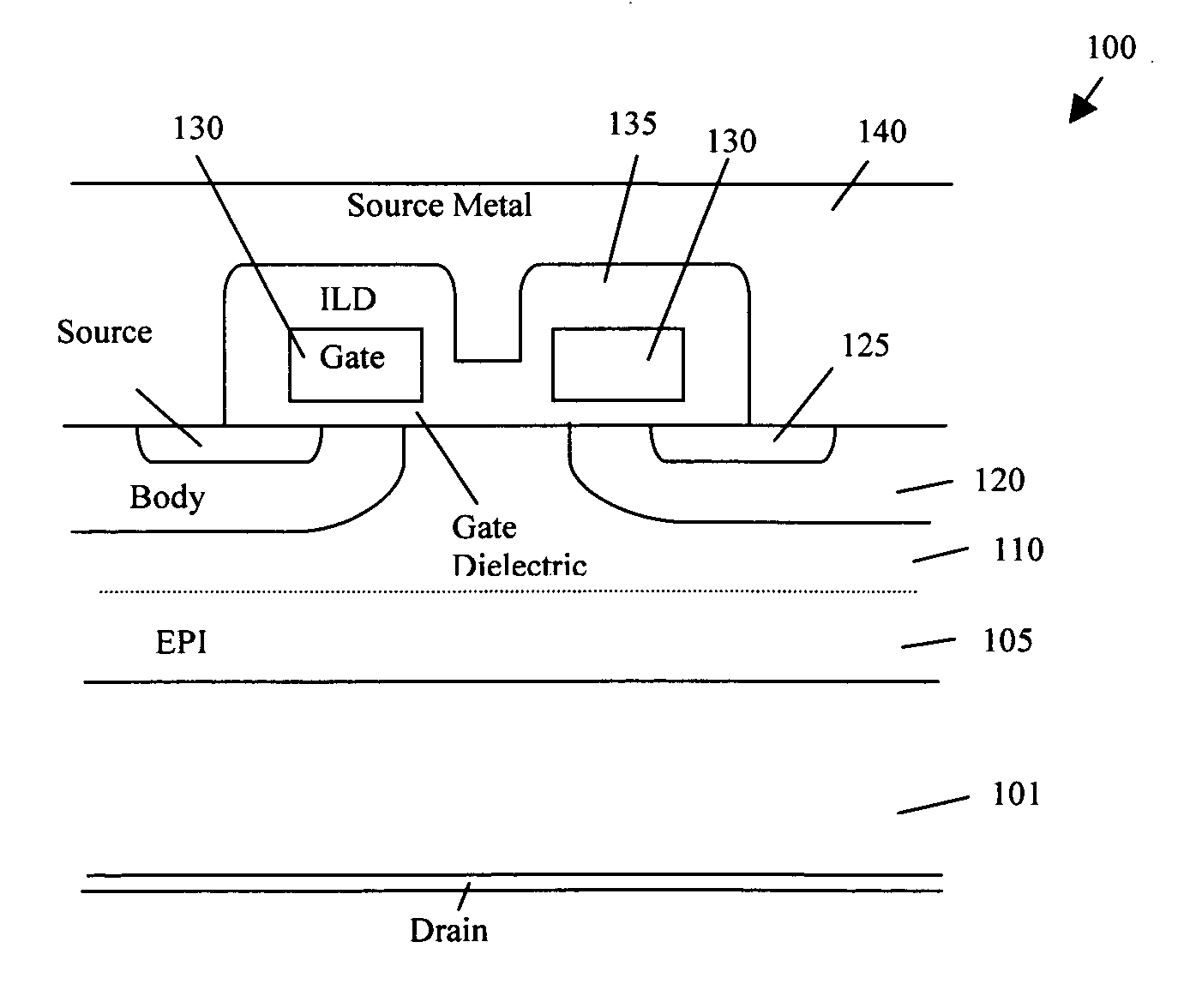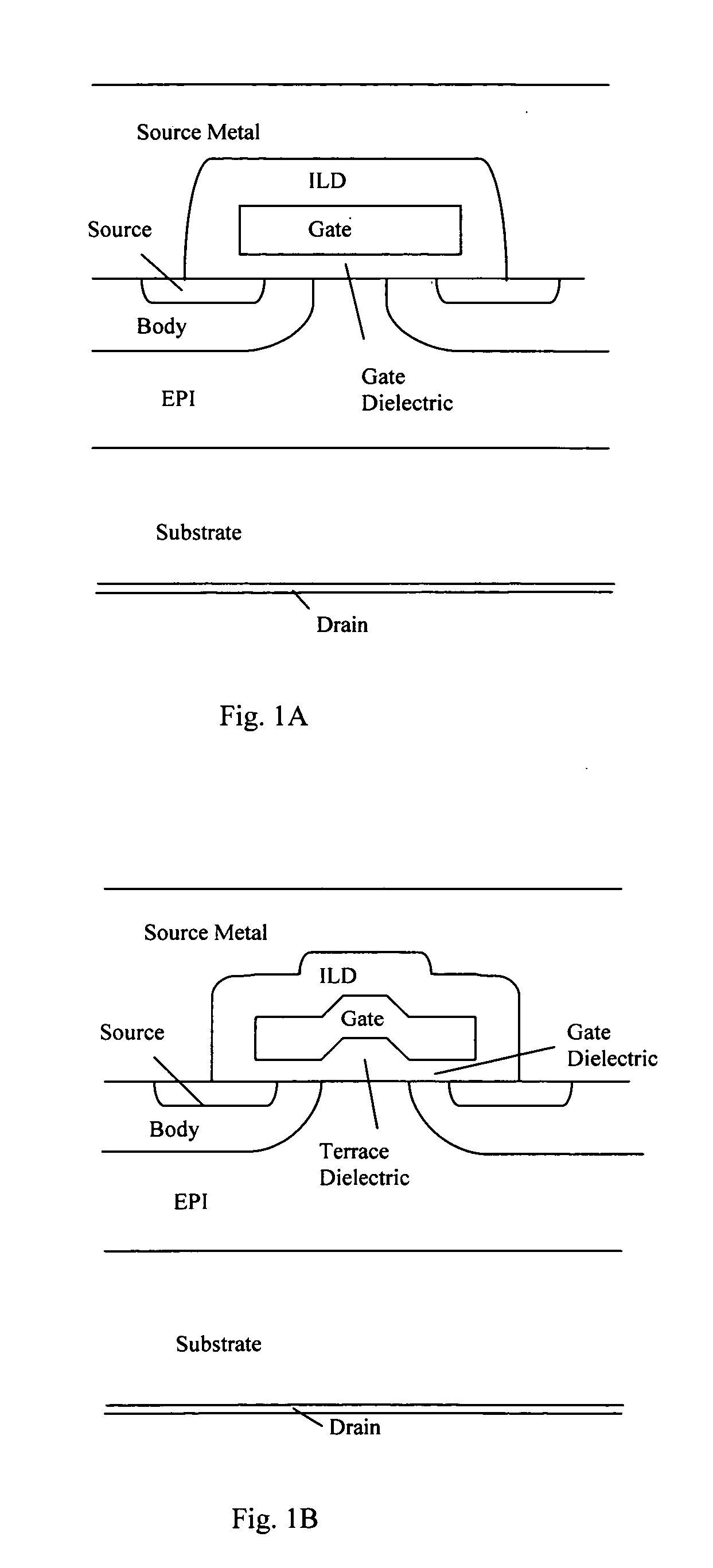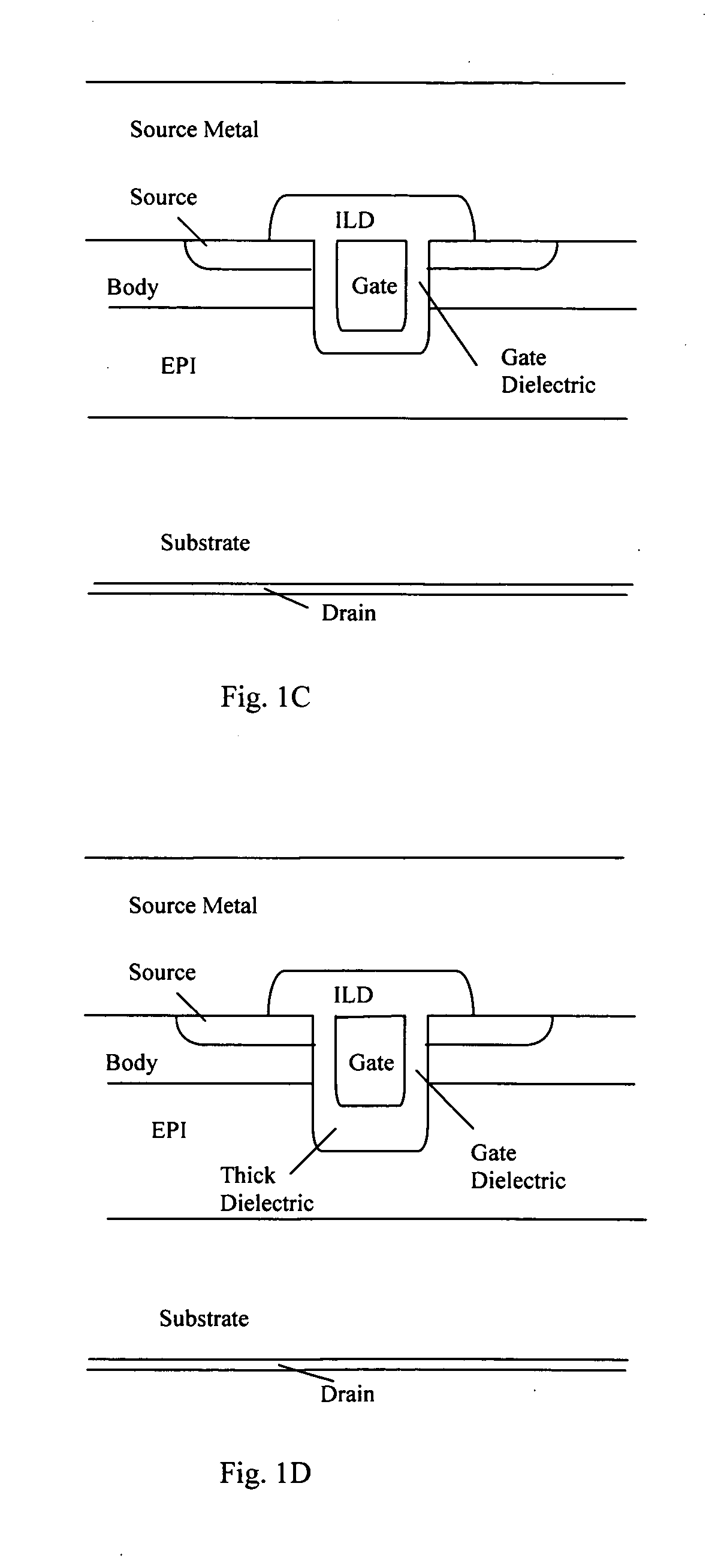Power MOSFET device structure for high frequency applications
a power mosfet and high frequency technology, applied in the field of device configuration and fabrication process of power mosfet device structure, can solve the problems of difficult to reduce the cell size, and limited conventional device configuration and manufacturing process of power switching device, so as to reduce the gate-drain overlapping area, reduce the input and feedback capacitance, and reduce the overlapping area
- Summary
- Abstract
- Description
- Claims
- Application Information
AI Technical Summary
Benefits of technology
Problems solved by technology
Method used
Image
Examples
Embodiment Construction
[0029] Referring to FIG. 2 for an equivalent circuit of a MOSFET device M includes a gate, drain and source electrodes wherein the gate has a gate resistance Rg and there is an adjustable resistance over the epitaxial layer and the substrate connected to the drain electrode. A PN diode, e.g., Dbody, is formed across the body layer. There are capacitors between three electrodes, i.e., Cgs between the gate and the source, Cgd between the gate and the drain and Cds between the drain and the source. In the power MOSFET parlance, the input capacitance Ciss, feedback capacitance Crss and output capacitance Coss are determinate by the follows:
Ciss=Cgd+Cgs
Crss=Cgd
Coss=Cds+Crss
[0030] The input capacitance Ciss is inversely proportional to the achievable maximum frequency the MOSFET device can operate. Therefore, in order to increase the operation frequency, a design approach is to reduce the input capacitance Ciss.
[0031] Furthermore, the input capacitance Ciss and the feedback capacitan...
PUM
 Login to View More
Login to View More Abstract
Description
Claims
Application Information
 Login to View More
Login to View More - R&D
- Intellectual Property
- Life Sciences
- Materials
- Tech Scout
- Unparalleled Data Quality
- Higher Quality Content
- 60% Fewer Hallucinations
Browse by: Latest US Patents, China's latest patents, Technical Efficacy Thesaurus, Application Domain, Technology Topic, Popular Technical Reports.
© 2025 PatSnap. All rights reserved.Legal|Privacy policy|Modern Slavery Act Transparency Statement|Sitemap|About US| Contact US: help@patsnap.com



